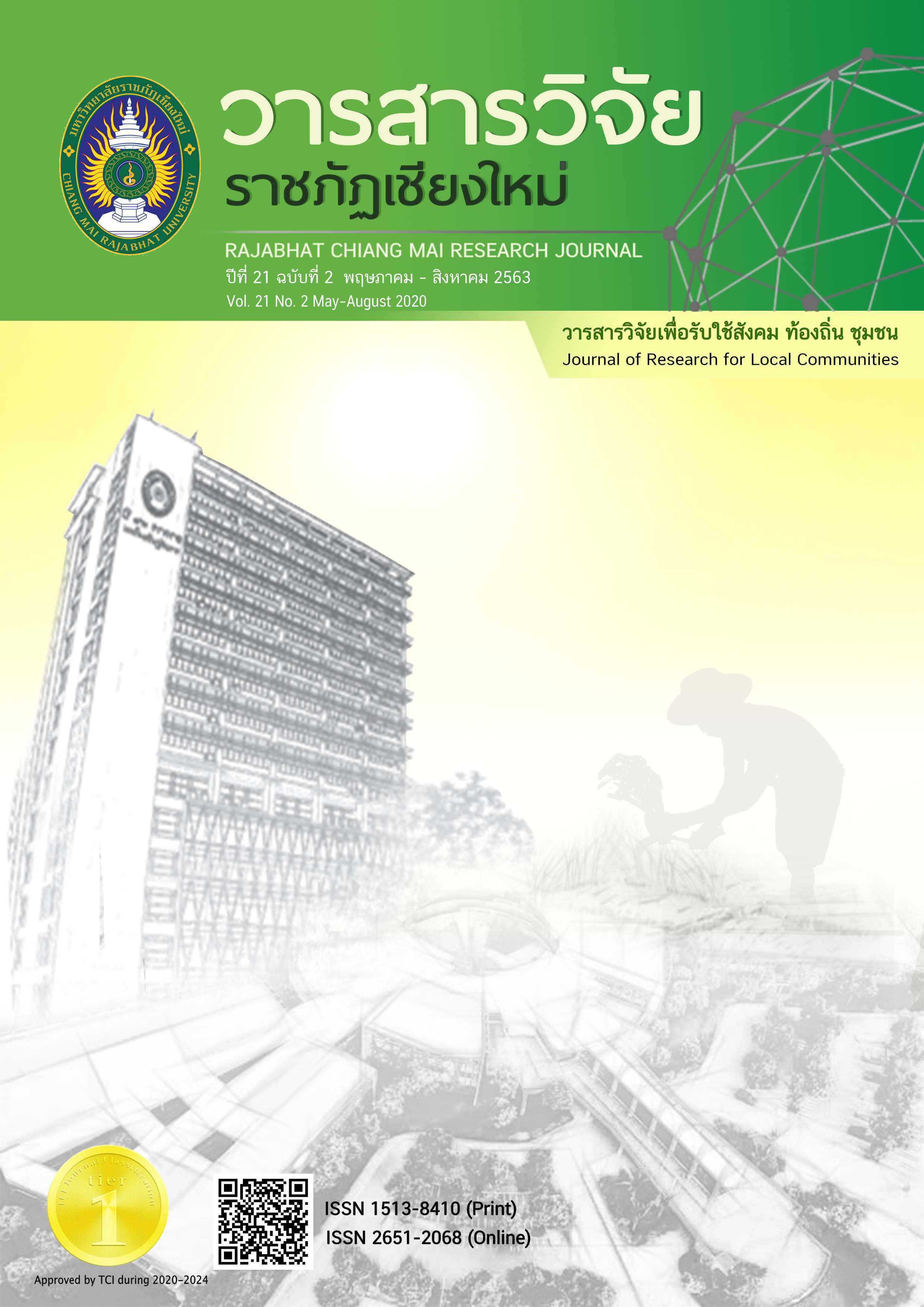Local Product Development Guidelines in Connection with Tourism of Bang Kacha Community, Chanthaburi Province
DOI:
https://doi.org/10.14456/rcmrj.2020.240020Keywords:
Product development, Local product, Bang Kacha, Community tourismAbstract
The objectives of this research are 1) to study the behavior of Thai tourists in buying local products, and 2) to propose guidelines for the development of marketing mix strategies to connect with the tourism of Bang khacha community, Chanthaburi province. It is a quantitative research which uses a questionnaire to study the behavior of 400 Thai tourists in buying local products. The result revealed that 1) The tourists have an attitude towards tourism marketing mix factors of Bang khacha community, Chanthaburi province is in the "extremely agreeable" level. Most tourists buy souvenirs and artificial art. The cost of buying local products is between 1,001-1,500 baht and buying on Saturdays and Sundays between 15.01-18.00 hrs. Those involved in the decision to buy local products are friends or colleagues, and 2) guidelines for developing marketing mix strategies to connect with the tourism of Bang khacha community, Chanthaburi province is supposed to carry out marketing promotions and the development of local product formats to increase diversity. The reed mats as local products are used for public relations by the community knowledge management in order to support the local products development to inherit the wisdom and identity.
Downloads
References
Daniel, C. O. (2018). Effect of marketing strategies on organizational performance. International journal of business marketing and management, 3(9), 1-9.
Daugherty, T., & Hoffman, E. (2014). EWOM and the importance of capturing consumer attention within social media. Journal of marketing communications, 20(1), 82–102.
Latif, A., & Abideen, Z. U. (2011). Effects of television advertising on children: a Pakistani perspective. European Journal of Economics, Finance and Administrative Sciences, 30(4), 38-49.
Ministry of Tourism and Sport. (2017). Tourism statistic. Retrieved from https://www.mots.go.th/more_news.php?cid=411 (In Thai)
National Statistical Office. (2017). Tourism statistics of Chanthaburi. Retrieve from http://chanthaburi.old.nso.go.th/nso/project/search/result_by_department.jsp (In Thai)
Office of the National Economics and Social Development Council. (2016). The 12th. National economic and social development plan (2016-2020).Bangkok: The 12th national economic and social development plan. (In Thai)
Peters, C., Bills, N., Wilkins, J., & Fick G. (2008). Foodshed analysis and its relevance to sustainability. Renewable Agriculture and Food Systems, 24(1), 1-7.
Voinov, A., & Bousquet, V. (2010). Modelling with stakeholders. Environmental modelling and software, 25(11), 1268-1281.
Yazdanifard, R., & Mercy, I. (2011). The impact of green marketing on customer satisfaction and environmental safety. International conference on computer communication and management Proc. of CSIT, 1(5), 637-641.
Downloads
Published
How to Cite
Issue
Section
License
1. Articles, information, content, images, etc published in the “Community and Social Development Journal” are copyrighted by the Community and Social Development Journal, Chiang Mai Rajabhat University. In order to properly distribute the articles through print and electronic media, the authors still hold the copyright for the published articles under the Creative Commons Attribution (CC BY) license, which allows the re-distribution of the articles in other sources. References must be made to the articles in the journal. The authors are responsible for requesting permission to reproduce copyrighted content from other sources.
2. The content of the articles appearing in the journal is the direct responsibility of the article authors. The editorial board of the journal does not necessarily agree with or share any responsibility.














